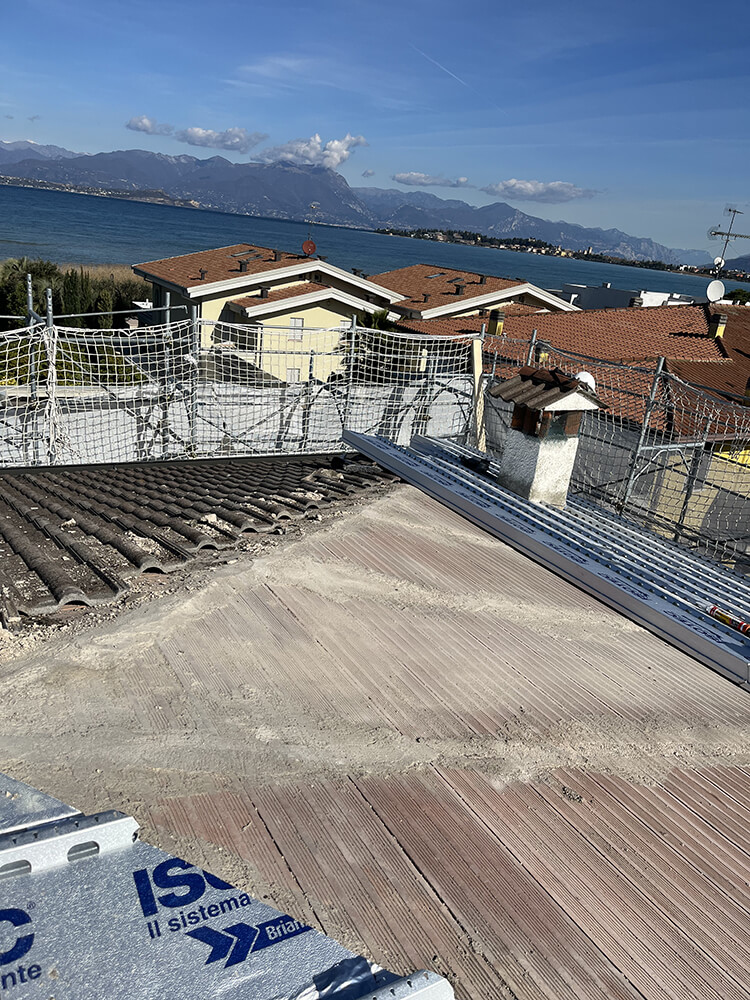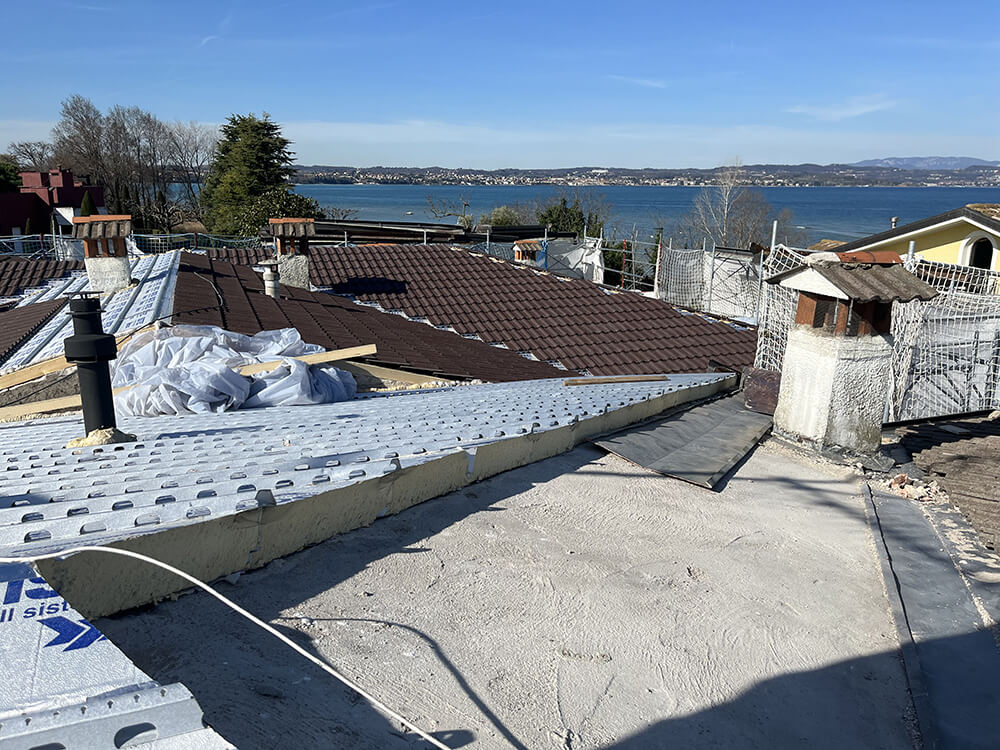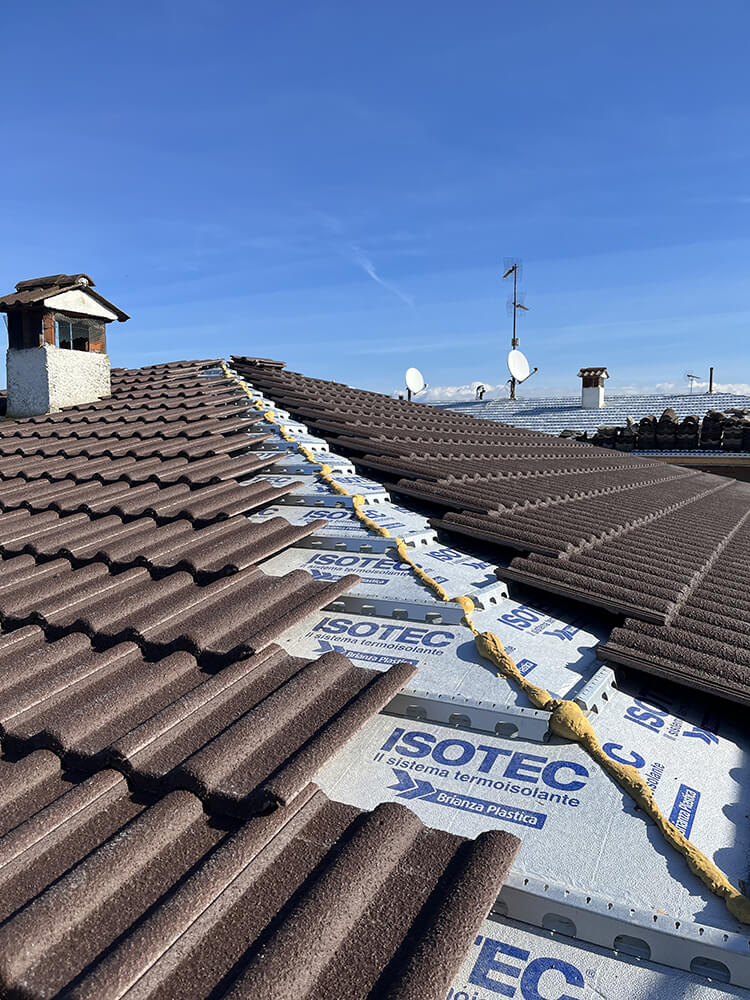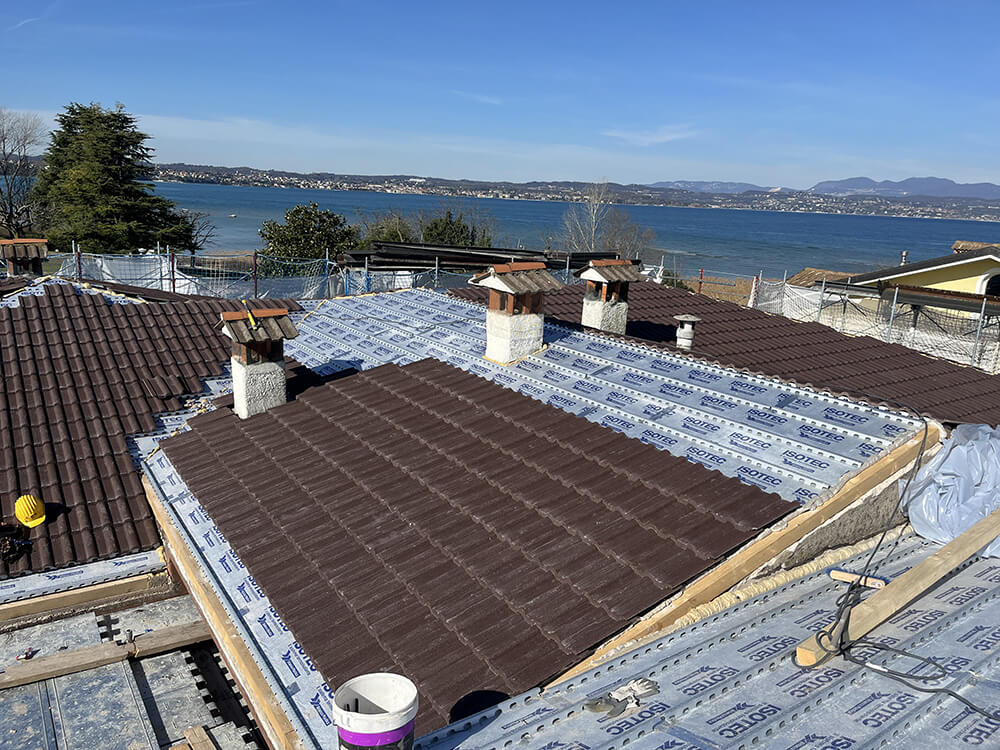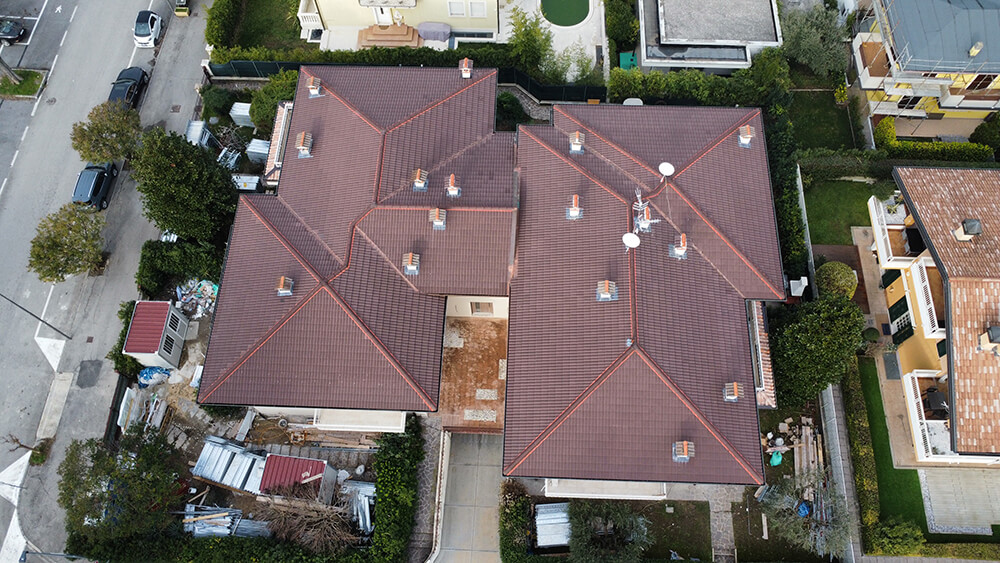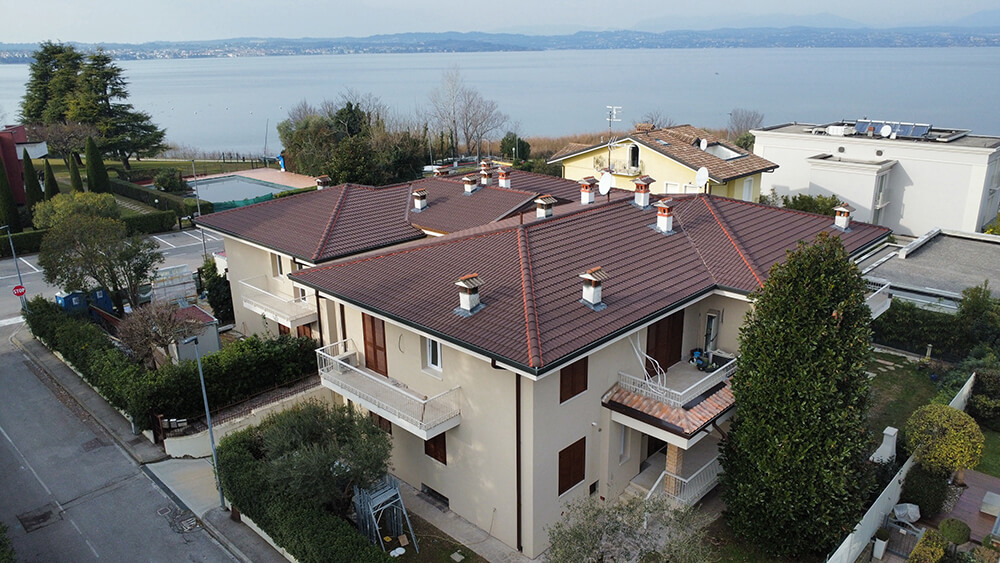condominium
in sirmione
Ventilated roof
| Type: | Residential building – Condominium |
| Intervention: | Renovation |
| Location: | Sirmione (BS) |
| Roof insulation: | Isotec by Brianza Plastica – 100 mm thickness, 330 mm pitch |
| Roof cladding: | Concrete tiles |
The project
Overlooking the picturesque shores of Lake Garda, this charming condominium in Sirmione consists of eight residential units distributed over two above-ground levels. Originally built in 1987, the building has undergone a major renovation aimed at enhancing its seismic safety and energy performance. To insulate the complex and extended multi-pitched roof, the design team opted for a ventilated insulation solution featuring the Isotec System.
The intervention
The roof, constructed at the same time as the condominium, featured a load-bearing structure made up of small masonry walls and hollow clay slabs. It lacked both thermal insulation and waterproofing, with concrete tiles laid directly on the slabs and bonded with mortar.
Renovation work began with the removal of the existing roof tiles and thorough cleaning of the supporting surface. Where necessary, the surface of the exposed hollow slabs was levelled with cement mortar, followed by the application of a waterproofing membrane. The Isotec panels were then installed and secured with dowels at the joints, without the need to drill holes in the tiles.
The roof presented numerous discontinuities due to its multiple pitches with varying ridges and valleys, as well as numerous protruding elements (chimneys). These were handled by the installation team in accordance with the manufacturer’s recommended procedures and using the accessories designed to complete the system.
The result
With only a minimal increase in the overall roof thickness — from 32 to 45 mm — the thermal resistance of the roof layer increased from 0.73 m²K/W to 5.32 m²K/W, representing a significant improvement in energy performance. The entire energy efficiency upgrade, which involved all opaque and transparent surfaces, led to an outstanding enhancement in the building’s overall performance, raising its energy rating from Class E to Class B, an impressive leap of three energy classes.

